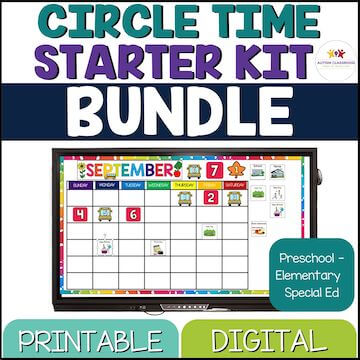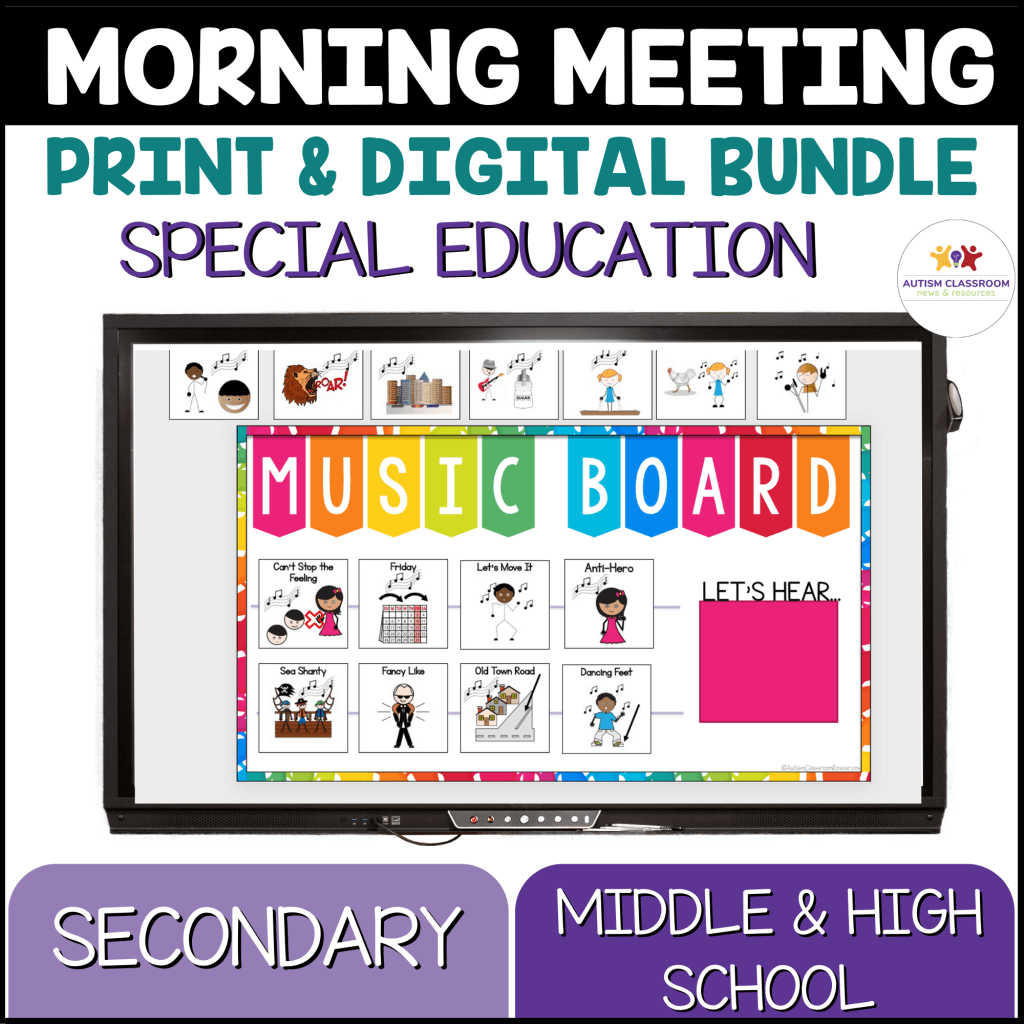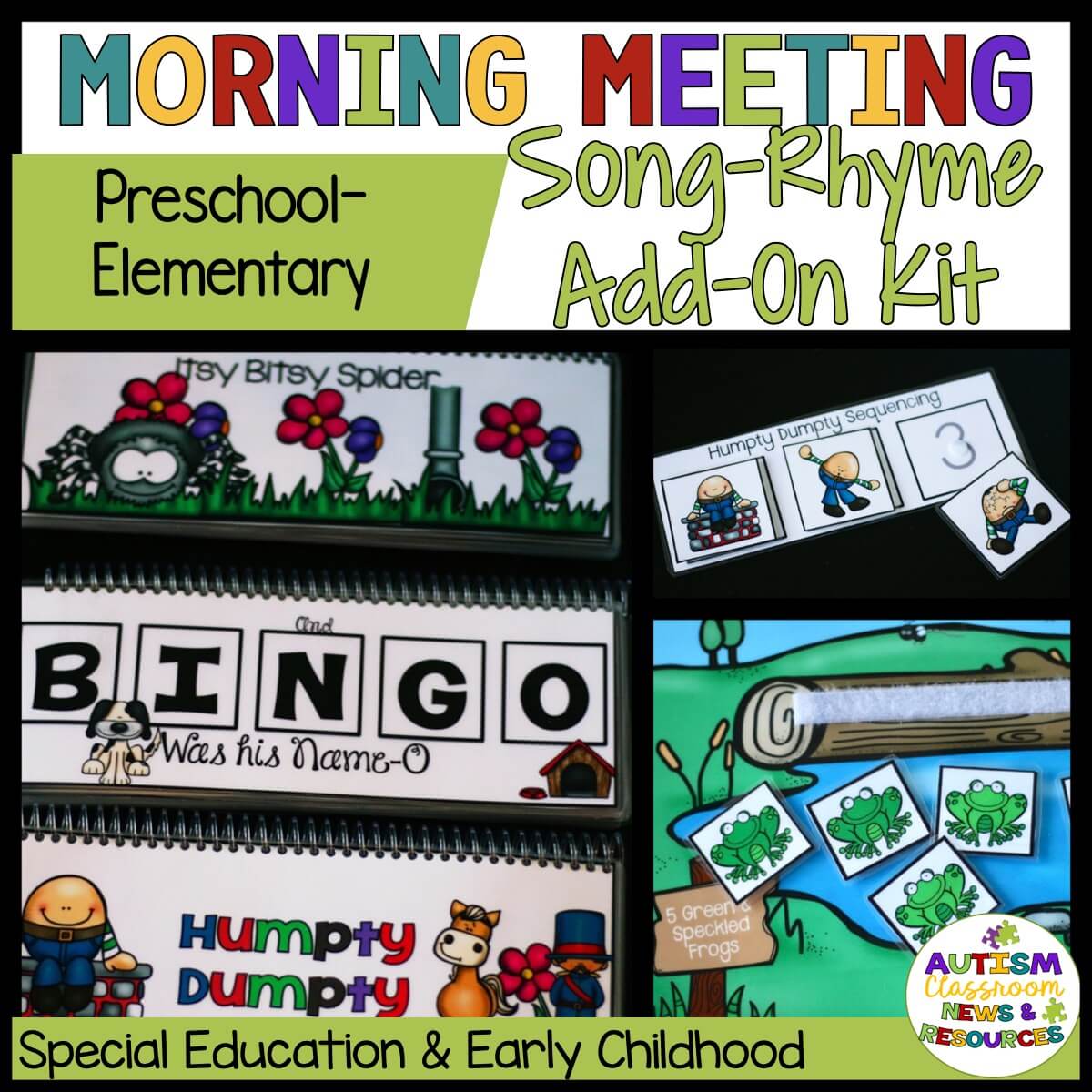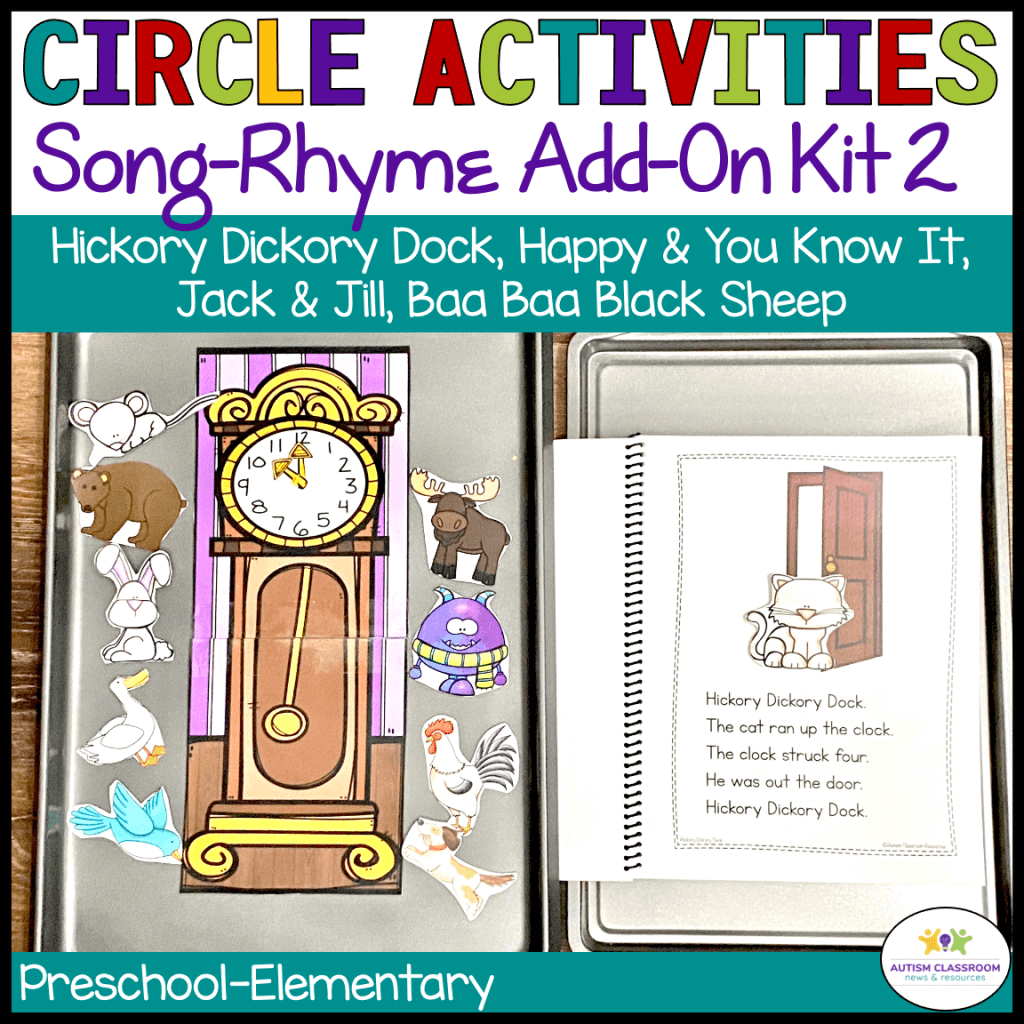Sharing is caring!


Special education morning meeting is intimidating to many of us for our classroom morning routine. Maybe you have tried it and felt like you couldn’t meet the needs of the different levels of your individual students. Or perhaps it was that your students didn’t stay engaged for the whole meeting. Or you just didn’t see it benefitting your students in the special education classroom.
For all of these reasons, I see lots of teachers whose solution to this is to avoid having whole group activities. The problem with that is that our students need to learn to interact in larger groups. Larger groups is how general education works and really, it’s how many of us learn.
You may be saying, that’s great, but knowing why I need it doesn’t really solve my problem. And you are right…so here are 10 steps to help you run a special education morning meeting that will not only work, but will end up being your favorite part of the day.
10 Steps to Run a Successful Special Education Morning Meeting
1. Organization
This is the key to almost everything in the special ed. classroom and probably one of the hardest things to achieve. The key is to plan out your morning meeting routine based on the goals and skills of your students.
Most of my planning usually takes place first completing the Teaching Implementation Plans for each student. This helps to identify the skills that you would want to target for each student during a whole group activity. It also helps you think through what types of supports you students will need to be successful. If you aren’t familiar with TIPs, you can find more info in the video I linked above or in this post specifically about Teaching Implementation Plans.
Your next step is the lesson plan. Lesson plans are important because they allow you to integrate your IEPs from the TIPs with the curriculum of your classroom. In addition they also allow you to communicate the goals and plans to the rest of the staff.
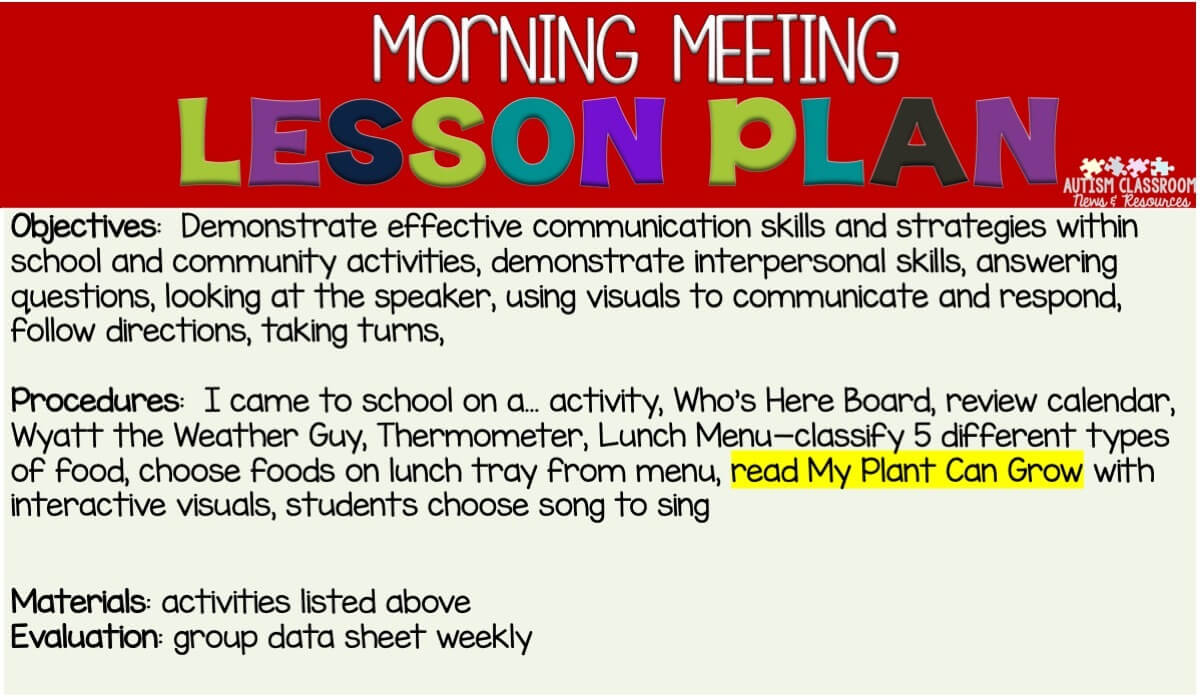
Once your plans for the morning meeting are set, you can start assembling the materials for your new daily routine. One of the keys to a smooth morning meeting are having the activities and materials prepared and ready to go. This reduces downtime and improves student engagement.
I organize my visuals on boards or easels and place them in order that we run through the routine. That way they lead me through the routine without having to think about it. I know it’s the next page or the next board.
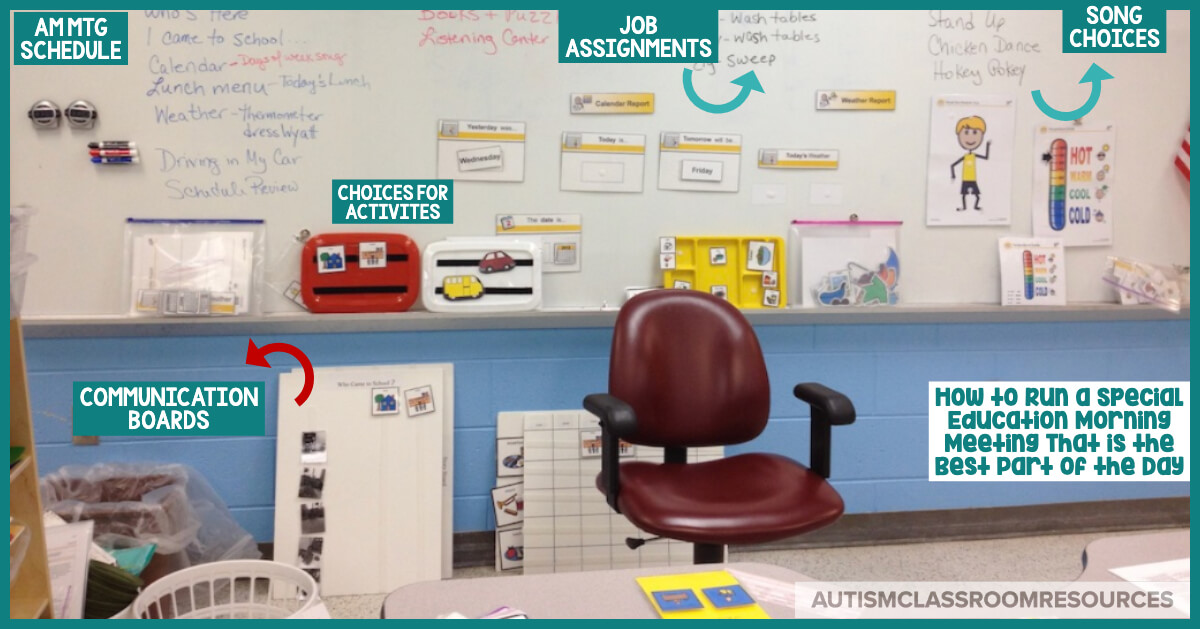
2. Set Routine For Beginning the Meeting
Once your materials are set up, establish a routine for how you start off the meeting each day. It might be having students greet each other in different ways (e.g., using a speech generating device, fist bump, funny rhyme). Having a set routine that starts every meeting is a great way to help students know what to expect and help reduce anxiety
3. Use Visuals
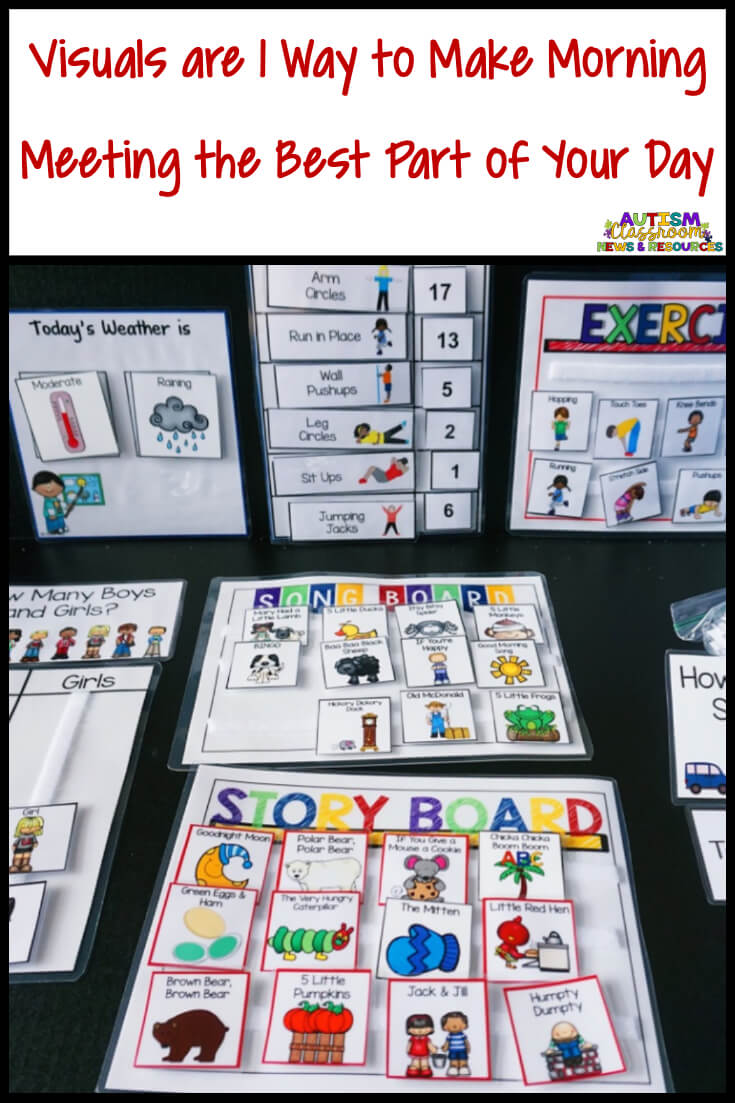
Hardly a surprising item, coming from me, I’m sure. And I’ve talked about visuals before. Visuals can be used in different ways in group activities, but they are the most effective way of creating engaging activities. They can use them to exchange, to follow along, or to understand what is being said.
You can also use things like response cards so that every student is participating in answering questions. Read more about response cards in this post.
4. Individualize Activities
Many if not most of you probably work with students who have a wide variety of skills. Some may be verbal. Others might not be. This student can do the calendar sequencing independently. That student doesn’t know what a calendar is. So how do you include all of them in a morning meeting activity? Individualize morning meeting activities.
You can do the same common activities but individualize them in several different ways.
- The way they respond (e.g., some students use numbers on the calendar, others indicate if they are at home or at school).
- How they participate. For example, one student uses a switch to turn music on and off for students to dance. Another chooses the song with visuals. Others participate by dancing and stopping. Some may participate with the actions of the song.
- How they demonstrate skills. One student might greet students with a fist bump. Another might use his communication device. And a third might say “Good morning, Sam.” And the fourth might just hand a picture to an adult who responds with praise and greetings.
5. Encourage Communication
Think about what most of us do when we get together in a group. For instance, what happens when you go to professional development with other special educators in your district? You probably greet them and catch up. How do you catch up with them? You talk–you communicate.
Consequently, whole group activities, especially like a morning or afternoon meeting, are prime times to work on communication and social skills. It’s a great time for naturalistic instruction. Grab a freebie in this post for skills to target for incidental instruction.
Similarly you can build language by
- using sentence starters for making requests or choices for songs or books.
- Having some students tell how other students came to school based on the How I Came to School board.
If some students are still working on making basic requests, build an activity that requires them to initiate interaction for something that they like. So if they like Kooshes, do a short music and movement game where some students throw them back and forth between them, some just play with them, and those working on asking for them have to request them…all to a song.
6. Target Participation and New Skills
Part of the focus of a good morning meeting can be targeting students’ participation. For some students, their goals might include remaining in the group, following directions, and responding to questions (i.e., participation).
But, it’s also a great time to introduce new skills that you are going to be working on that day or that week. You could
- Review the art project for the day
- Introduce new theme-based vocabulary for the word wall
- Share new concepts from the curriculum (e.g., demonstrate rough and smooth with rhythm sticks they use for a song)
- Review a science experiment for the week
Or use a News2You newspaper lesson you’ll focus on more later in the day
7. Integrate Social Interaction
Just like with communication, morning and afternoon meeting are perfect times to work on interpersonal skills. Having students greet each other are only one of the interactive social activities you could include.
- Give each student a role of passing out materials or picking up materials and have them ask the other students for them, or say thank you when they receive them.
- Develop a Question of the Day activity and have students who are working on talking to peers ask each student the question.
- Have students offer the choice boards to each other rather than just having the choices offered by adults.
- Work on visually referencing the communicative partner
- Have students ask questions about something another student shared (e.g., what I did this weekend).
8. Include Movement

Many times one of the elements that make whole group activities tough is that we expect the students to sit still for longer than they are able. Adding movement gives them the chance to get out of their seats and is great for the engagement of your special education students. If you find that the movement is disruptive, or makes your morning meeting too long, you can also divide your group time into two segments. Have your morning meeting when the students arrive. Run a set of centers. Then have a music and movement time to break up time before more seated activities.
For younger students, music and movement might include things like action songs the Hokey Pokey, a Go Noodle brain break, or a dance-and-freeze song. If you have students in wheelchairs who can activate switches, put them in charge of turning the music on and off with the switch to direct when to dance (music on) and when to freeze (music off).
For older students, it might include an exercise time where they stretch, do an exercise video tape or just an exercise routine. You could also have an exercise board that they choose from.
9. Review the Students’ Day
Morning meeting (and then afternoon meeting at the end of the day) is a great time to review what is going to happen that day. I use the group schedule and show them what we have finished and what is coming. It’s a good time to share changes in the schedule that you know about ahead of time as well. This is the perfect time to help them understand to look at the full class schedule instead of just their individual schedules. I like to do this just before transitioning the students to check their schedule. You could also incorporate clocks and time instruction into the group schedule.
10. Transition Thoughtfully to the Next Activity
I like to have the students check their schedules before they transition to the next activity. However, if they all are checking at the same time, it can be overwhelming. The transition solutions I describe in this post can help with this as well. You want to make sure that your transition is smooth specifically so you don’t lose the momentum of a productive morning meeting.
Bonus
And finally, as a bonus item to consider, remember that not every student has to participate in the morning meeting for the same amount of time every single day. One student may only be able to manage successfully for 5 minutes when the rest of them need to work on more full group skills for 20 minutes. That’s OK. Just plan what the 5-minute student will do for the other 15 minutes so it isn’t just a free for all.
Much of making a daily morning meeting, or any whole group activity, successful is really in planning it out and assuring you are meeting the needs and accommodating all the different students. It’s a tough thing to do in some classes, but if you spend the time at the beginning of the year, it can start your day off strongly.
Want more visuals on-hand to be able to build an engaging special education morning meeting? Then you might like my morning meeting starter kits. To help them be age appropriate, there are items for different age levels. You can grab them in my store by clicking on the pictures below.

